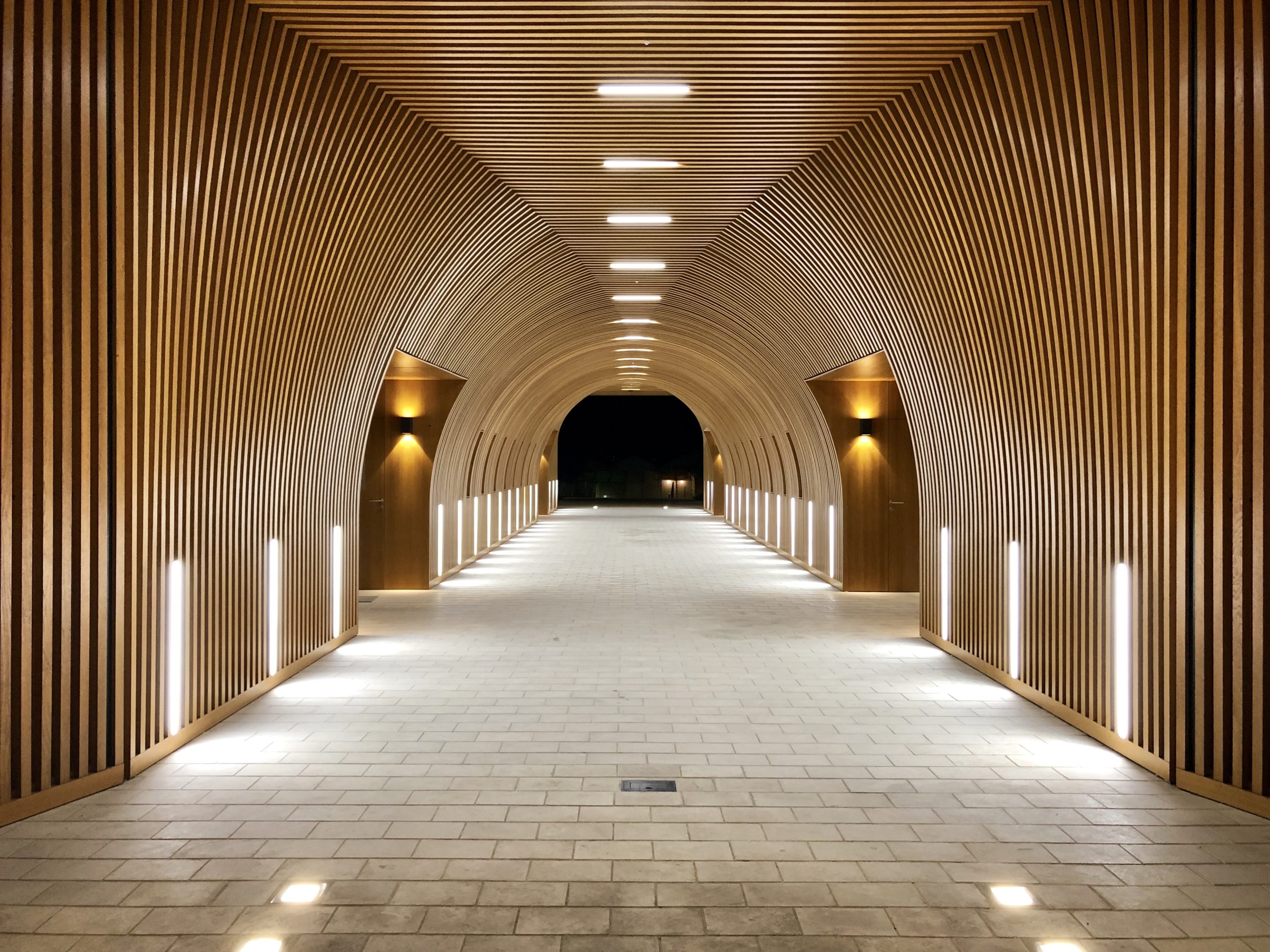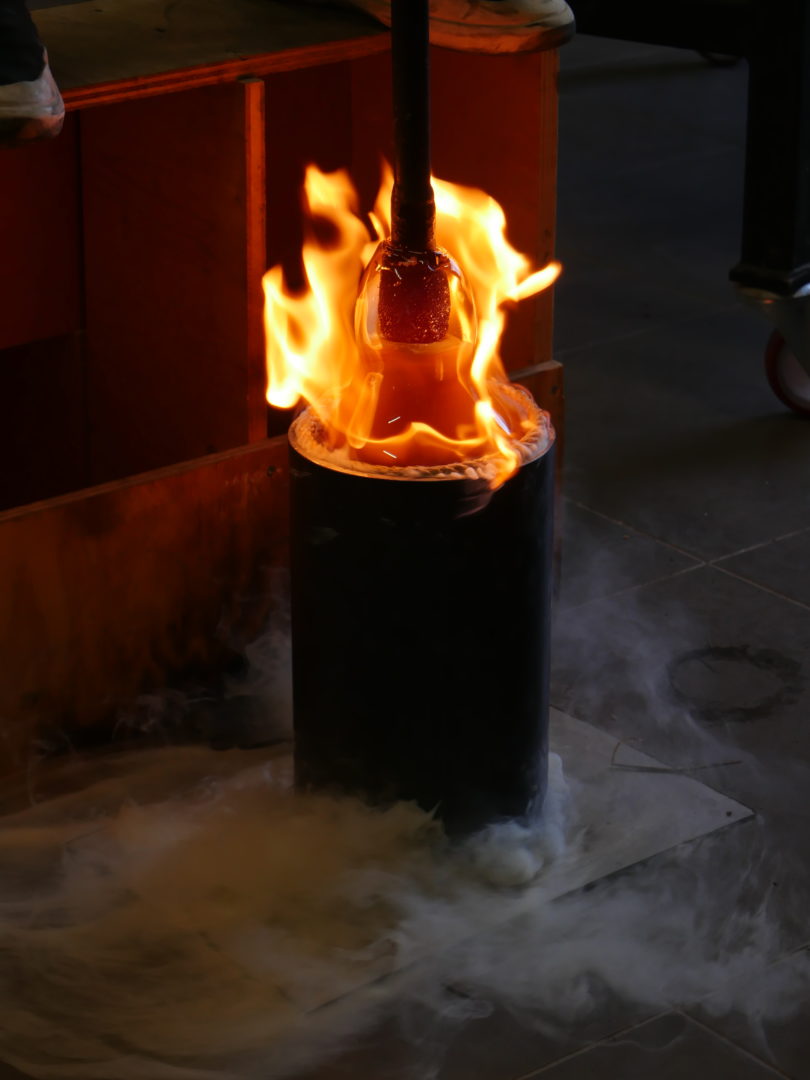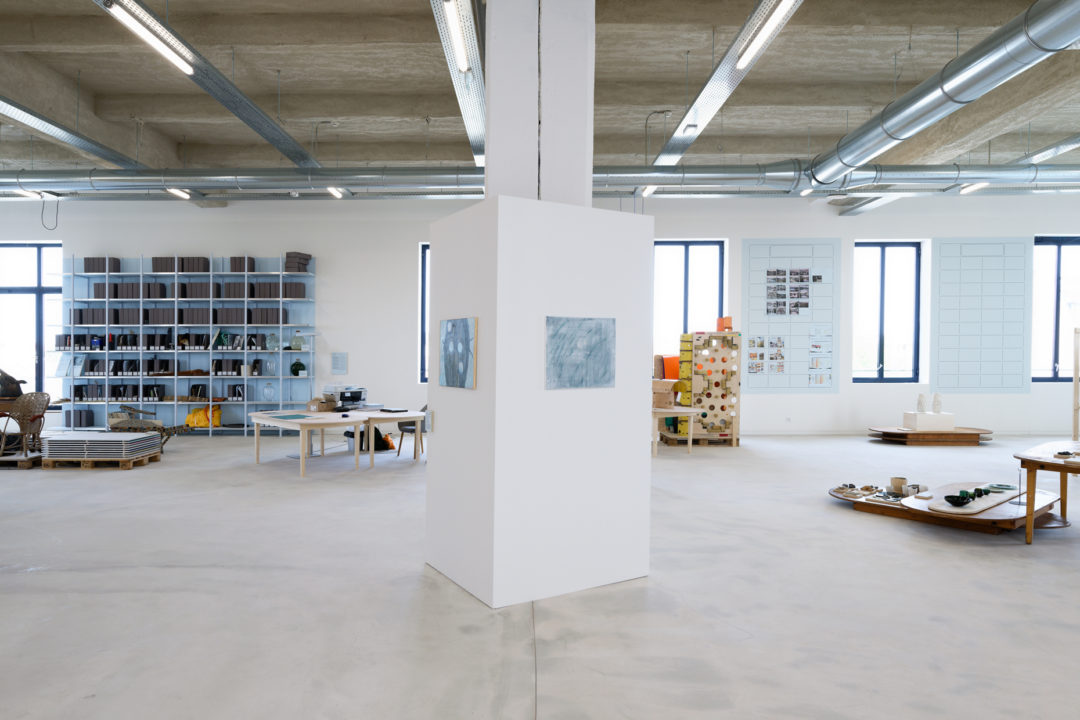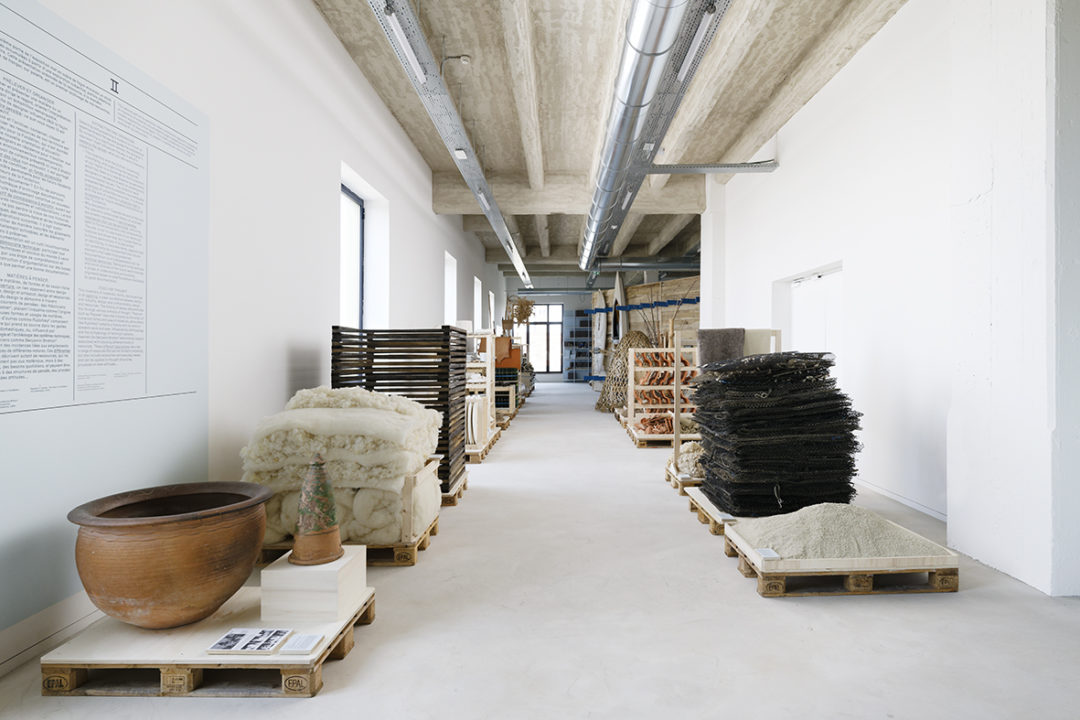Anne-Claire Duprat

Interview with Anne-Claire Duprat, director of the Martell Foundation
The Martell Foundation was created in 2016, and is characterised by the wood, glass and ceramic workshops it houses, created specifically for use by artists. Succeeding Nathalie Viot, who directed the Foundation from 2016 to 2022, it is now Anne-Claire Duprat’s turn to determine the establishment’s goals by leading them in a design-oriented direction, forging new connections between art, the region and ecological transition.
Vanessa Morisset : During the first years of its existence, the Foundation made it a point to highlight arts and crafts, in particular by pairing artisans with artists. For example, there was a commission for a monumental glass chandelier by Nathalie Talec, in 2017. How did your project develop in relation to this?
Anne-Claire Duprat: One of the characteristics of the Martell Foundation is the way in which it was decided to take the time to define itself at its own pace, as it went through several phases of renovations, which included a progressive opening of its different spaces to the public—we are still working on several floors at the moment—and with regard to furnishing the spaces as well as to programming. The project I developed began with the question of how to allow the Foundation to continue growing and distinguishing itself in the French context where there is already so much on offer in the way of the visual arts, while providing fundamental support to artmaking. So many public and private programs already exist which are specifically oriented toward art; there are more and more these days, toward arts and crafts and techniques as well, however few are related to design. French Foundations in the private sector in particular do not really make these types of commitments. My impression is that this is where we here in Cognac can be particularly relevant, especially considering the many complex situations the ecological crisis we are currently facing have given rise to. The Foundation’s objective is to provide support to a new generation of designers whose practices are progressive and committed to change; I’m thinking about biodesign, ecosocial design in particular. These are creative areas which are brimming over with possibility; they are ripe with potential ways to respond to the ecological crisis we are experiencing at the moment. Creativity is a formidable tool in times of crisis! Our role is to back designers, by providing them with the tools and resources they need. It is important that we show that design does not stop with the creation of an image or an object—as it so often has been conceived—by highlighting methods which get less exposure. We want to encourage the work of designers like Lucile Viaud, whose innovative glassworking method, ‘géoverrerie’ involves the use of natural resources. Many emerging designers are working with these types of themes. Their experimental aims cannot be achieved alone.

V M: From what I understand, you hope to support research and experimentation as opposed to production?
A.-C. D: Yes, today it has become clear that the very notion of production is problematic, considering the environmental impact that results from it. We have tools, the idea is not to deny the perspective of giving artists the means to create, however we would like to question the impact of the activities which make the Foundation attractive. In any case, the fact that we do not impose production constraints on the residents we work with is essential to us, as well as to them. It forces us to come to terms and to dialogue with this type of residency program, with whether it is the right type of residency for them. Designers are generally not accustomed to this type of program, which is usually aimed toward other practices. Designers work toward the fulfilment of commissions, but they also need downtime. We can help them by offering good working conditions, so that they may push their experimentations beyond economic constraints. We can help people who need specific types of machines in order to experiment, to produce prototypes, and also to develop design concepts—in July the Cuban designer, researcher and teacher Ernesto Oroza was here, he left behind some literature about reuse. We are interested in supporting design which takes critical notions as its starting point, which looks at our surroundings and takes the form of theoretical analysis, in an exchange with scientists, philosophers, anthropologists and of course, artists. At the moment, in our residency we have Ludovic Duhem with us—he is a philosopher who specialises in bioregions. The only thing we require from our residents is that they present their findings to the public, because we think it is essential to show that creation is a form of work, that it takes time and happens in stages. We need to move beyond conventional notions about the notion of artworks, in order to show that they are not immaculate objects set upon a white plinth which are given a certain value, that they begin with a process, and are the result of the interaction between a thought process and a material.
V M: Can you tell us more about the residency you are working on? Who is it meant for? For young designers? Or art schools?
A.-C. D: It is for emerging or established professionals because, as I said before, very few platforms are geared toward design in France, and our hope is to become a stepping stone; this has been the case for the Pernod-Ricard Foundation with contemporary art for example, for a number of years now. However, more than anything else, it is very interesting to combine different levels of experience and approaches, to facilitate encounters and exchanges. There is a real mixture of experience and approaches. Residencies are considered as periods of emulation. Soon, we will be opening up a residency house with space for up to five or six people at a time. We are working on developing partnerships with art and design schools in the region, as well. This fall, for the back-to-school season, two partnerships with schools in Angoulême and Limoges are being developed in order to offer a residency to a recent graduate from each school. We will also be hosting seminaries from each of these schools, which is a way to work with the local ecosystem and to form a relationship which is mutually beneficial. In addition, we are hosting a workshop on geomaterials at the moment, which has been developed with students from the Magma master which was established by the artist Natsuko Uchino from the art school in le Mans; they will be coming here to work with resources from the “Almanac” exhibition. They will be focussing on the processing of crushed oyster shells.

V M: That’s right, we have yet to talk about the exhibition! So, “Almanac” is your first since you began leading the Foundation. For this show, you collaborated with Olivier Peyricot and Lola Carrel, who is an art and design historian, Valentin Patis, an emerging designer who studied at the ESAD in Reims and at the Design Academy in Eindhoven, and Mathilde Pellé, a designer who studied at ENSAD. How did their work on this exhibition reflect your project?
A.-C. D: This exhibition was originally meant to be the final stage of a research program, which was put in place before the residency program which aims to develop new relationships in the region, which means that it has a particular format and is installed in the spaces on the second floor of the building. It is first and foremost a tool for education which attempts to explore and understand the local context and therefore goes into the history, the geology, the geography, all of which puts the materials in conversation with one another and with the works. In the future, there will be one major exhibition every year on the ground floor, which will either be on the work of one artist or have a given theme. A second, smaller exhibition on the second floor will be more experimental in nature, “residency on display”, which will feature the work of a young designer, in the hopes that this platform could lead to future research. “Almanac” combines these two formats. Since we will be hosting residents from France as well as from abroad, we identified the need for them to have the tools at their disposal to be in touch with the local context and to identify the surrounding resources available to them. They include human resources in the form of artisanal practices, natural resources such as plants, and the many industrial resources which are available here which are related to the production of cognac, glass, but also wool, leather, tiles and also slate, the ecological impact of which is explored in the exhibition…Olivier, Lola, Valentin and Mathilde worked as “design investigators” and it worked really well because they were not here to author a work, but rather to share methods, in a collective fashion, everyone was completely enthusiastic to be in the situation since it does not happen very often! The results of their experimentation is the content of this exhibition which is open to the public; the objective is nonetheless to have a tool which will become permanent, a “living archive” which evolves over time. The exhibition will be reconfigured once it closes—the last space, which is already a work space, will be re-organised and made permanent under the name of “Almanac Laboratory”. I was really inspired by the way that one exhibition put a protocol into place and then shared the results: “Ressources” at the Arsenale Pavilion in 2022, which explored the possibilities for architectural construction within a 99 km radius of Paris, in order to make use of the local economy.
V M: During our tour of the ateliers, you mentioned the Foundation’s effort to keep artistic production onsite ecologically sound, can you give us a few examples?
A.-C. D: We want to support actors who are already engaged in this type of activity, we have to keep things coherent on our level! Our building was renovated in 2016, and in terms of energy conservation, its levels are optimised. Issues continue to crop up, however, especially with regard to the horrendous heat released by the glass furnaces, which it would be great to be able to put to use. In order to make ceramics, a lot of energy is consumed and lost… just because a practice is vernacular does not necessarily make it green. Ecologically-minded museography is equally of interest to us, which may seem self-evident, but it is not always so simple to put into place. Regarding energy, since there is a lot of sun in Cognac, we have asked Marjan van Aubel, a Dutch designer, to develop one of her very thin, printable and customisable solar panels which we will install within the walls of the building. Her installation will generate energy and also show the public what design is capable of.

______________________________________________________________________________
Head image : Passage en bois, Fondation-Martell © Fondation Martell
- From the issue: 104
- Share: ,
- By the same author: Interview with Céline Kopp , Interview with Elfi Turpin, Théo-Mario Coppola,
Related articles
Céline Poulin
by Andréanne Béguin
Émilie Brout & Maxime Marion
by Ingrid Luquet-Gad
Interview with Warren Neidich
by Yves Citton

